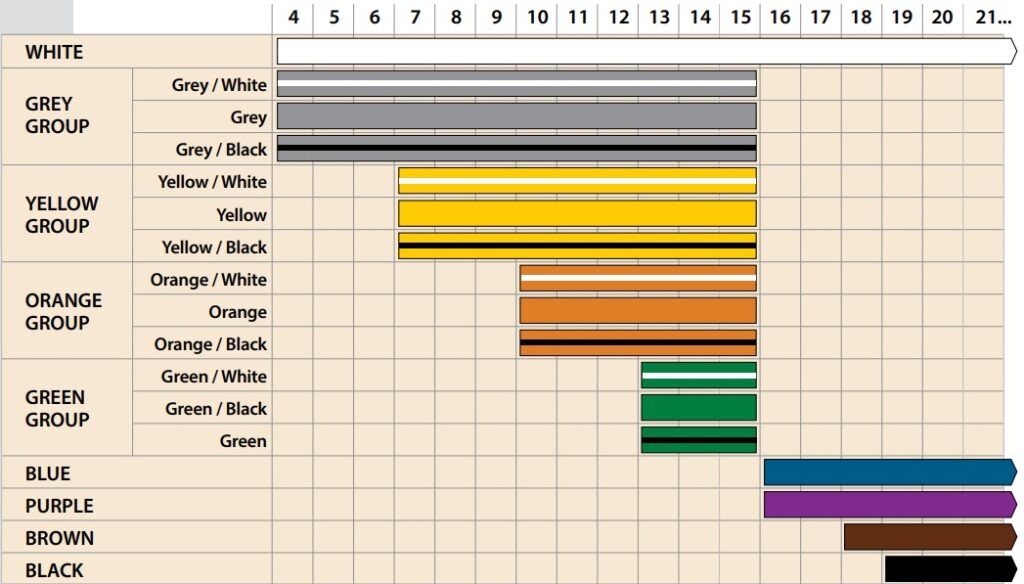The BJJ Kid's Belt System Explained
Are you interested in learning more about the Kid’s BJJ Belt System? Look no further! This informative article will provide you with a detailed explanation of this belt system, designed specifically for young practitioners of Brazilian Jiu-Jitsu.
In the world of martial arts, belts serve as a symbol of progress and achievement. The Kid’s BJJ Belt System is no different. It provides a structured pathway for children to develop their skills and move up through the ranks.
This article will delve into the intricacies of the Kid’s BJJ Belt System, explaining how it differs from the adult belt system and highlighting its importance in a child’s martial arts journey. From understanding the various belt colors to exploring the transition from kid’s to adult’s belt system, we’ve got you covered.
Additionally, we will discuss the crucial role that coaches play in guiding children through this system and fostering their growth as martial artists.
So, whether you’re a parent looking to enroll your child in Brazilian Jiu-Jitsu or an aspiring young practitioner yourself, read on to discover all there is to know about the Kid’s BJJ Belt System.
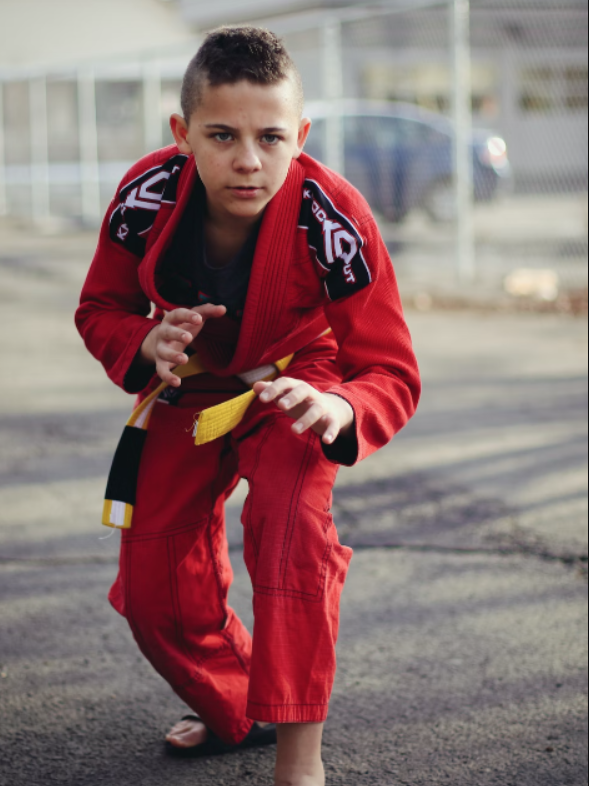
Introduction
In the world of Brazilian Jiu-Jitsu (BJJ), the belt system plays a crucial role in recognizing a practitioner’s progress and skill level. This ranking system starts with a white belt and progresses to green belt. It provides structure and motivation for students to strive for excellence. Each belt represents a milestone achieved through dedication, hard work, and mastery of techniques. Understanding the importance of the BJJ belt system is essential for anyone looking to embark on this martial arts journey. If you are interested in learning more about the adult belt system, take a look here.
A Brief Overview of Brazilian Jiu Jitsu
While learning Brazilian Jiu-Jitsu, you will engage in a dynamic and technical form of martial arts that involves grappling and submissions. This discipline focuses on ground fighting techniques, teaching practitioners how to use leverage and technique to overcome larger opponents.
To help track progress and skill level, BJJ has a belt system for both adults and kids. Here is a brief photographic overview of the kid’s BJJ belt system:
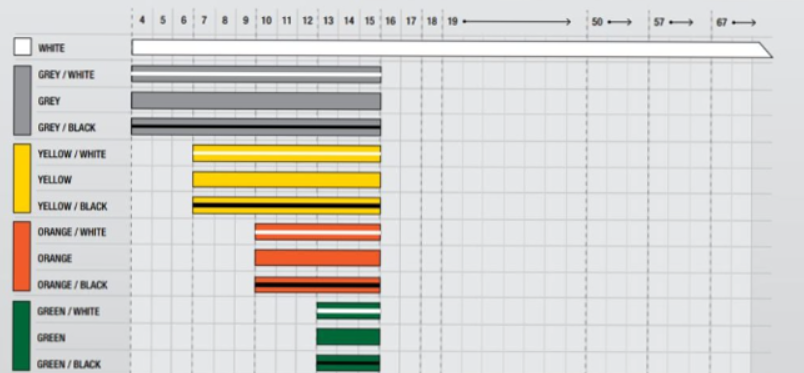
As children progress through the ranks, they learn new techniques, build confidence, and develop discipline. The belt system serves as a motivating factor for young practitioners to set goals and work towards achieving higher levels of proficiency in BJJ.
The Importance of the belt system
The belt system in Brazilian Jiu-Jitsu is a powerful motivator, inspiring practitioners of all ages to strive for excellence and push beyond their limits. It serves as a tangible representation of progress and skill development within the martial art.
For kids, the belt system provides structure and goals to work towards, instilling discipline and a sense of achievement. As they progress from one belt color to another, they gain confidence in their abilities and develop a strong work ethic.
Additionally, the belt system helps instructors track students’ progress and ensures that they are learning the necessary techniques at each stage. It also fosters a supportive community where more experienced practitioners mentor and guide those who are just starting out.
Overall, the belt system plays a crucial role in motivating kids to stay dedicated to their training and continually improve their skills in Brazilian Jiu-Jitsu.
Understanding The Kid's BJJ Belt System
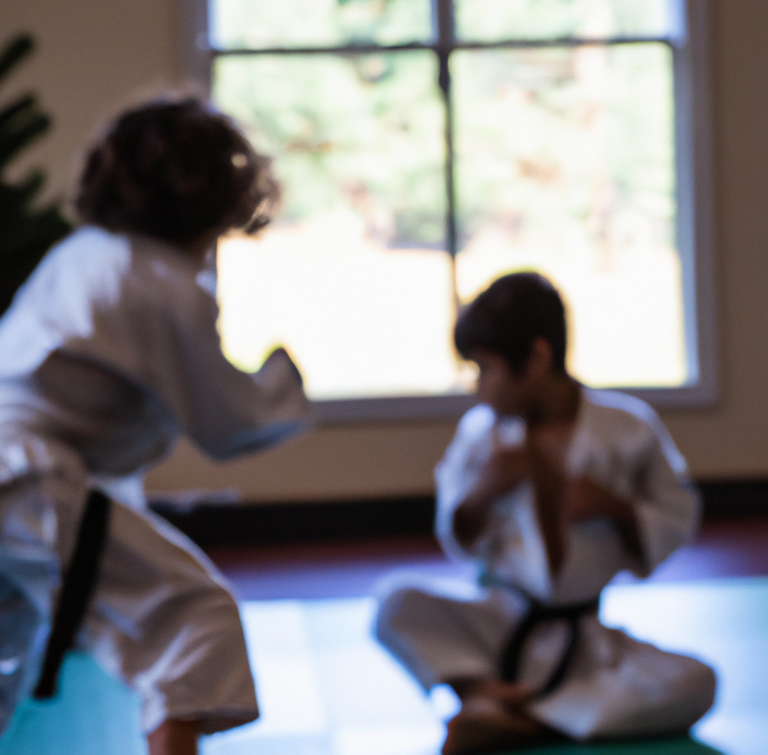
In the Kid’s BJJ Belt System, there are some unique characteristics that set it apart from other martial arts belt systems.
First, the Kid’s BJJ Belt System focuses on age-appropriate techniques and skills, allowing children to progress at their own pace. This ensures that they develop a strong foundation before moving on to more advanced techniques.
Additionally, the belts in this system are color-coded to indicate a child’s level of skill and experience, providing clear goals for them to strive towards.
Unique Characteristics of The Kid's BJJ Belt system
In the world of Brazilian Jiu-Jitsu (BJJ), the belt system is an important way to gauge a practitioner’s progress and skill level. When it comes to the kid’s BJJ belt system, there are some unique characteristics that set it apart from the adult’s belt system.
Difference Between Kid's and Adult's BJJ Belt System
One key difference is the age-specific classifications, which ensure that children are learning and competing against others in their own age group. This allows for a more appropriate and fair development of skills as they grow and mature in their BJJ journey.
Despite their similarities, the kid’s and adult’s BJJ belt systems differ in terms of rank requirements and expectations. For example, kids’ belts may focus more on technical skill development and discipline, while adult belts often emphasize competition performance and mastery of advanced techniques.
Age-Specific Classifications
Now that you understand the difference between the kid’s and adult’s BJJ belt system, let’s dive into age-specific classifications.
These classifications play a crucial role in ensuring that children are placed in appropriate training environments where they can learn and grow effectively.
By dividing kids into specific age groups, instructors can tailor their teaching methods to suit each group’s unique physical and cognitive abilities, fostering optimal development on their martial arts journey.
An In-Depth Look at the kid's BJJ belt system
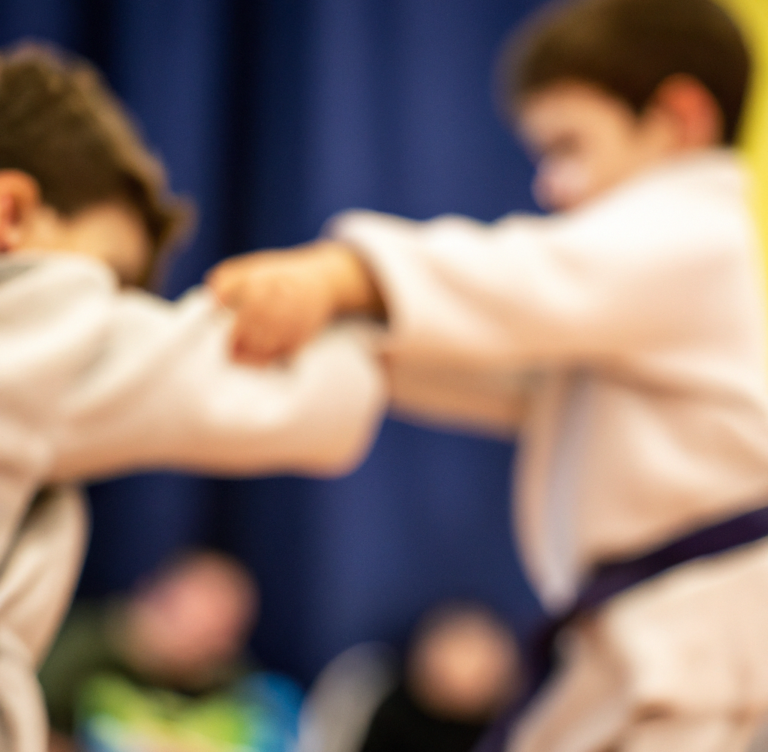
In the kids’ BJJ belt system, there are several key points to understand. You will start as a White Belt, representing a clean slate and a beginner in BJJ. From there, you will progress to the Grey Belt, which signifies some basic knowledge and understanding of techniques.
The Yellow Belt follows next, indicating further growth and development in your skills. Then comes the Orange Belt, showcasing more advanced techniques and strategies. Finally, you will reach the Green Belt stage, where you demonstrate proficiency in various aspects of Brazilian Jiu-Jitsu.
White Belt
At the beginning of their journey, white belt holders are like blank canvases, ready to absorb and learn the fundamental techniques of Brazilian Jiu-Jitsu. As a white belt, the main focus will be on building a strong foundation in the art of BJJ.
Here, kids will learn basic positions such as guard, mount, and side control, as well as essential submissions that are easy on children to learn and execute.
White belts are encouraged to develop good body awareness and control during training sessions. This includes understanding how to move efficiently and effectively while maintaining proper body positioning.
In addition to learning techniques, white belts also begin to understand the language and principles behind BJJ. They start recognizing the importance of leverage and timing, an important skill to master over time.
With consistent training and dedication, white belts progress to grey belt when they are ready.
Grey Belt
As a young grey belt practitioner in Brazilian Jiu-Jitsu, this stage offers exciting opportunities for growth and refinement in both technique and strategy. Embrace the challenges that come with it, stay committed to consistent training, and prepare yourself for even greater accomplishments on your martial arts journey.
Yellow Belt
The Yellow Belt signifies a significant milestone in a child’s BJJ training. At this level, they’ve gained a solid foundation of techniques and are now ready to explore more advanced concepts. They’ll learn new sweeps, submissions, and escapes, building upon what they’ve already learned.
In addition to expanding their technical knowledge, students at this level also begin to focus on developing stronger physical attributes such as strength, flexibility, and endurance. They’ll engage in drills and exercises specifically designed to enhance these aspects of their training.
Overall, the Yellow Belt represents growth and progress for young BJJ practitioners. It shows that they’re dedicated to improving their skills and are committed to embracing everything the art has to offer.
Orange Belt
Moving on to the next level in the kid’s Brazilian Jiu-Jitsu belt system, let’s dive into the Orange Belt and imagine a world of new techniques and possibilities.
Here are three exciting aspects of the orange belt level:
– Expanded techniques: At this stage, kids learn more complex moves, including various sweeps, submissions, escapes, and transitions. These techniques build upon what they have learned as a yellow belt and enhance their overall understanding of BJJ.
– Increased sparring opportunities: With an orange belt around their waist, more chances open to participate in live rolling sessions with other students. This helps improve timing, reflexes, and decision-making abilities in real-time situations.
– Developing strategy: As an orange belt, kids are encourage to start focusing on developing effective strategies during rolls. You’ll learn how to read your opponent’s movements and respond with calculated attacks or defenses.
The orange belt is an important stepping stone towards higher levels in BJJ. It is now that each young practitioner must embrace these new challenges if they expect to move on to the next level
Green Belt
As a green belt holder, the child has clearly demonstrated dedication and commitment to training.
This belt signifies that you’re now a formidable opponent, possessing a solid foundation of fundamental positions and submissions.
With the green belt, children will continue to expand their knowledge of sweeps, escapes, and transitions. At this point, advancing age permits the introduction of more complex strategic concepts as well as more intricate physical demands.

Transition from kid's to adult's bjj belt system
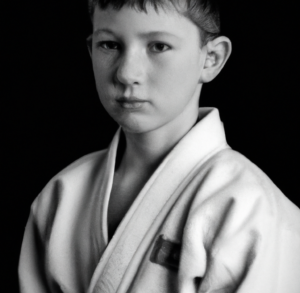
When transitioning from the kid’s BJJ belt system to the adult belt system, there are a few key points to consider.
First, it’s important to understand the transition process and how it differs from the kid’s belt system. This includes learning about the requirements, expectations, and evaluations that come with advancing through the adult belts.
Second, preparing for the adult belt system involves building a strong foundation of skills and knowledge in Brazilian Jiu-Jitsu. This may include focusing on technique refinement, physical conditioning, and mental preparation.
Lastly, seeking guidance from experienced training partners and instructors can greatly aid in navigating this transition successfully and ensuring a smooth progression to the adult belt system.
Preparing for the adult Belt System
When preparing for the adult Belt System, there are two key points to consider: skill progression and psychological readiness.
Skill progression is important because as a child moves up in the belt ranks, the expectation is to be able to execute more advanced techniques. This requires consistent training, dedication, and a willingness to learn and practice on their own.
Psychological readiness is also crucial because advancing through the belt system can be mentally challenging. It requires perseverance, confidence in your abilities, and the ability to handle pressure in competition settings.
By focusing on both skill progression and psychological readiness, a young practitioner can better prepare for success in the adult’s classes.
Skill Progression
Throughout their journey in Brazilian Jiu-Jitsu, kids experience a gradual and rewarding skill progression. They learn and practice techniques, developing coordination, flexibility, and problem-solving skills. Starting with basic movements like shrimping and bridging, they gradually advance to more complex submissions and escapes. Each step builds upon the previous one, allowing them to grow both physically and mentally. This step-by-step approach helps kids gain confidence while mastering the art of BJJ.

Psychological Readiness
Being psychologically prepared means having mental resilience, being able to stay calm under pressure, and having a strong mindset. It involves understanding your emotions and using them to your advantage, as well as being able to adapt and strategize during matches. Throughout a child’s progression, there will no doubt be a lot of tears. These tribulations will be rewarded with a renewed sense of accomplishment, perseverance and pride.
How do kids get promoted?
Here are three important things to keep in mind during the promotion process:
– Consistency: Regularly attending classes and practicing techniques will show commitment to improving and the team.
– Effort: Putting in maximum effort during training sessions demonstrates your determination to succeed.
– Attitude: Maintaining a positive attitude and showing respect towards instructors and fellow students is crucial for advancement.
Remember, promotions are an exciting milestone that reflect your growth and development within BJJ. Keep working hard, stay focused, and enjoy the journey!

Benefits of the Kid's BJJ Belt System
The kid’s BJJ belt system offers numerous benefits and plays a crucial role in the development of discipline and respect.
As children progress through the ranks, they learn to set goals, work hard, and persevere, cultivating important life skills that extend beyond the mat.
Additionally, the belt system helps build confidence and self-esteem as children gain recognition for their efforts and achievements.
By participating in BJJ, kids also experience physical and mental health benefits such as improved strength, flexibility, coordination, focus, and stress relief.
Development of discipline and respect
Respecting and disciplining oneself is a fundamental aspect of your child’s journey through the BJJ belt system, shaping them into respectful and disciplined individuals.
As they progress from one belt to another, they learn valuable lessons about the importance of discipline and respect both on and off the mat.
In the early stages of their training, kids are taught basic etiquette, such as bowing before entering or leaving the training area and showing respect to their instructors and fellow students. This helps instill a sense of discipline in them from an early age.
As they advance through the belt ranks, children are expected to demonstrate discipline by following instructions carefully, practicing regularly, and maintaining focus during training sessions. They also learn to respect their opponents by treating them with courtesy, acknowledging their skills, and always competing in a fair manner.
By developing these qualities through the BJJ belt system, your child will not only become proficient in martial arts but also grow into well-rounded individuals who understand the value of discipline and respect in all aspects of life.
Confidence and self-esteem building
Developing a strong sense of self-assurance and high self-esteem is crucial for children on their journey through the BJJ belt system. As they progress in their training, kids begin to gain confidence not only in their physical abilities but also in themselves as individuals.
Here are three ways that BJJ helps build confidence and self-esteem:
– Overcoming challenges: BJJ teaches kids how to face difficult situations and find solutions. This problem-solving mindset translates into everyday life, making them more confident when faced with obstacles.
– Setting and achieving goals: The belt system provides clear milestones for children to work towards. As they advance through the ranks, they experience a sense of accomplishment and pride, boosting their self-esteem.
– Positive reinforcement: In BJJ, instructors provide encouragement and praise for hard work and improvement. This positive feedback reinforces children’s belief in themselves and builds their confidence.
By fostering a supportive environment where kids can develop these qualities, the BJJ belt system plays a vital role in building confidence and self-esteem throughout their journey.
Conclusion
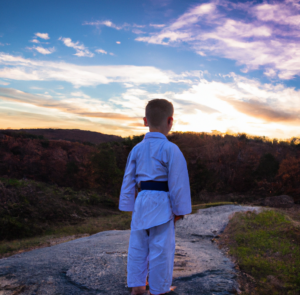
Now that we’ve covered the kid’s BJJ belt system and its benefits and importance, let’s recap what we’ve learned.
The belt system in Brazilian Jiu-Jitsu for kids serves as a motivational tool, allowing them to set goals and track their progress. It also teaches valuable life skills such as discipline, perseverance, and respect.
In conclusion, the kid’s BJJ belt system isn’t just about earning different colored belts, but also about personal growth and development both on and off the mats.
Final Thoughts
The kid’s BJJ belt system serves as a roadmap for young practitioners, guiding them towards personal growth and valuable life skills. It is not just about the physical aspects of the sport, but also about instilling discipline, perseverance, and respect.
Each belt represents a milestone in their journey, marking their progress and achievements. The system provides structure and motivation for kids to set goals, work hard, and overcome challenges. As they advance through the ranks, they gain confidence in their abilities and learn the importance of dedication and commitment.
Moreover, the belt system fosters a sense of camaraderie among young practitioners as they support and encourage each other on their martial arts journey.
Overall, the BJJ belt system is an integral part of children’s training that goes beyond just earning belts; it shapes them into well-rounded individuals both on and off the mat.

Frequently Aseked Questions (FAQ)
How do the belt promotions work in the Kid's BJJ Belt System?
In the kid’s BJJ belt system, promotions are based on skill level and age. As a child progresses, they earn different colored belts to signify their advancement. The criteria for promotion include technical knowledge, proficiency in techniques, and good character development.
Are there any age restrictions for participating in the Kid's BJJ Belt System?
Yes, there are age restrictions for participating in the kid’s BJJ belt system. Most schools start accepting children as young as 4 years old, while some may have a minimum age requirement of 6 or even 8 years old.
What are the key differences between the Kid's and Adult's BJJ Belt Systems?
The key differences between the kid’s and adult’s BJJ belt systems are the age requirements, curriculum, and promotions. Kids have specific belts based on age groups, different techniques taught, and promotions are often more frequent to keep them engaged in their training.
How often should kids be attending BJJ classes to progress in the belt system?
To progress in the kids’ BJJ belt system, it is recommended for them to attend classes at least 2-3 times a week. Consistency and regular practice are crucial in mastering techniques and advancing through the ranks.
Are there any specific techniques or skills that kids need to learn to advance in the belt system?
To advance in the belt system, kids need to learn a variety of techniques and skills in Brazilian Jiu-Jitsu. These include fundamental positions like guard, mount, and side control, as well as submissions such as armbars and chokes.
